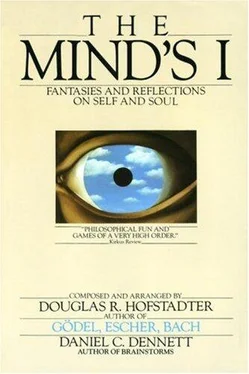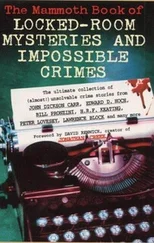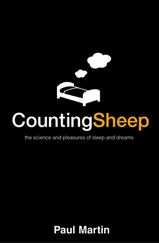But if you contribute to the world’s culture, if you have a good idea, compose a tune, invent a spark plug, write a poem, it may live on, intact, long after your genes have dissolved in the common pool. Socrates may or may not have a gene or two alive in the world today, as G. C. Williams has remarked, but who cares? The meme-complexes of Socrates, Leonardo, Copernicus, and Marconi are still going strong.
Dawkins is a master at expounding the reductionist thesis that says life and mind come out of a seething molecular tumult, when small units, accidentally formed, are subjected over and over to the merciless filter of fierce competition for resources with which to replicate. Reductionism sees all of the world as reducible to the laws of physics, with no room for so-called “emergent” properties or, to use an evocative though old-fashioned word, “entelechies”—higher-level structures that presumably cannot be explained by recourse to the laws that govern their parts.
Imagine this scenario: You send your nonfunctioning typewriter (or washing machine or photocopy machine) back to the factory for repair, and a month later they send it back reassembled correctly (as it had been when you sent it in), along with a note saying that they’re sorry—all the parts check out fine, but the whole simply doesn’t work. This would be considered outrageous. How can every part be perfect if the machine still doesn’t work right? Something has to be wrong somewhere! So common sense tells us, in the macroscopic domain of everyday life.
Does this principle continue to hold, however, as you go from a whole to its parts, then from those parts to their parts, and so on, level after level? Common sense would again say yes—and yet many people continue to believe such things as “You can’t derive the properties of water from the properties of hydrogen and oxygen atoms” or “A living being is greater than the sum of its parts.” Somehow people often envision atoms as simple billiard balls, perhaps with chemical valences but without much more detail. As it turns out, nothing could be further from the truth. When you get down to that very small size scale, the mathematics of “matter” becomes more intractable than ever. Consider this passage from Richard Mattuck’s text on interacting particles:
A reasonable starting point for a discussion of the many-body problem might be the question of how many bodies are required before we have a problem. Prof. G. E. Brown has pointed out that, for those interested in exact solutions, this can be answered by a look at history. In eighteenth-century Newtonian mechanics, the three-body problem was insoluble. With the birth of general relativity around 1910, and quantum electrodynamics around 1930, the two- and one-body problems became insoluble. And within modern quantum field theory, the problem of zero bodies (vacuum) is insoluble. So, if we are out after exact solutions, no bodies at all is already too many.
The quantum mechanics of an atom like oxygen, with its eight electrons, is far beyond our capability to completely solve analytically. A hydrogen or oxygen atom’s properties, not to mention those of a water molecule, are indescribably subtle, and are precisely the sources of water’s many elusive qualities. Many of those properties can be studied by computer simulations of many interacting molecules, using simplified models of the atoms. The better the model of the atom, the more realistic the simulation, naturally. In fact, computer models have become one of the most prevalent ways of discovering new properties of collections of many identical components, given knowledge only of the properties of an individual component. Computer simulations have yielded new insights into how galaxies form spiral arms, based on modeling a single star as a mobile gravitating point. Computer simulations have shown how solids, liquids, and gases vibrate, flow, and change state, based on modeling a single molecule as a simple electromagnetically interacting structure.
It is a fact that people habitually underestimate the intricacy and complexity that can result from a huge number of interacting units obeying formal rules at very high speeds, relative to our time scale.
Dawkins concludes his book by presenting his own meme about memes—software replicators that dwell in minds. He precedes his presentation of the notion by entertaining the idea of alternate life-support media. One that he fails to mention is the surface of a neutron star, where nuclear particles can band together and disband thousands of times faster than atoms do. In theory, a “chemistry” of nuclear particles could permit extremely tiny self-replicating structures whose high-speed lives would zoom by in an eyeblink, equally complex as their slow earthbound counterparts. Whether such life actually exists—or whether we could ever find out, assuming it did—is unclear, but it gives rise to the amazing idea of an entire civilization’s rise and fall in the period of a few earth days—a super-Lilliput! The selections by Stanislaw Lem in this book all share this quality; see especially selection 18, “The Seventh Sally.”
We bring this weird idea up to remind the reader to keep an open mind about the variability of media that can support complex lifelike or thoughtlike activity. This notion is explored slightly less wildly in the following dialogue, in which consciousness emerges from the interacting levels of an ant colony.
D. R. H.

11
Douglas R. Hofstadter
Prelude … Ant Fugue [15] Excerpt from Gödel, Escher, Bach: an Eternal Golden Braid by Douglas R. Hofstadter. Copyright © 1979 by Basic Books, Inc. Reprinted by permission of Basic Books, Inc., Publishers.
Achilles and the Tortoise have come to the residence of their friend the Crab, to make the acquaintance of one of his friends, the Anteater. The introductions having been made, the four of them settle down to tea.
TORTOISE: We have brought along a little something for you, Mr. Crab.
CRAB: That’s most kind of you. But you shouldn’t have.
TORTOISE: Just a token of our esteem. Achilles, would you like to give it to Mr. C?
ACHILLES: Surely. Best wishes, Mr. Crab. I hope you enjoy it.
(Achilles hands the Crab an elegantly wrapped present, square and very thin. The Crab begins unwrapping it.)
ANTEATER: I wonder what it could be.
CRAB: We’ll soon find out. (Completes the unwrapping, and pulls out the gift.) Two records! How exciting! But there’s no label. Uh-oh-is this another of your “specials,” Mr. T?
TORTOISE: If you mean a phonograph-breaker, not this time. But it is in fact a custom-recorded item, the only one of its kind in the entire world. In fact, it’s never even been heard before—except, of course, when Bach played it.
CRAB: When Bach played it? What do you mean, exactly?
ACHILLES: Oh, you are going to be fabulously excited, Mr. Crab, when Mr. T tells you what these records in fact are.
TORTOISE: Oh, you go ahead and tell him, Achilles.
ACHILLES: May I? Oh, boy! I’d better consult my notes, then. (Pulls out a small filing card and clears his voice.) Ahem. Would you be interested in hearing about the remarkable new result in mathematics, to which your records owe their existence?
CRAB: My records derive from some piece of mathematics? How curious! Well, now that you’ve provoked my interest, I must hear about it.
ACHILLES: Very well, then. (Pauses for a moment to sip his tea, then resumes.) Have you heard of Fermat’s infamous “Last Theorem”?
Читать дальше












